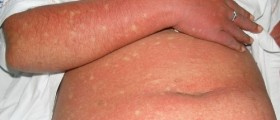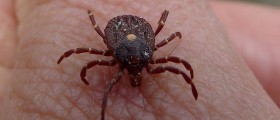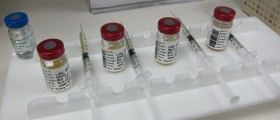Tularemia is a serious infection, to be more precise a zoonotic disease, caused by a bacterium Francisella tularensis. This infection is also known as rabbit fever or deerfly fever as it typically affects rabbits, hares and rodents. However, tularemia may be also seen in birds, reptiles and fish.
This rare infectious disease can be transmitted to humans as well. Direct contact with an infected animal and the bite of the infected ticks, mosquitoes and biting flies are common routes through which tularemia is spread to humans. Tularemia is highly infectious disease and can be fatal if left untreated. On the other hand, if detected early, tularemia can be cured with antibiotics.
Symptoms of Tularemia
The incubation period for tularemia can range between 1 day and 3 weeks. Symptoms of the disease may vary depending on the type of tularemia. There are several types of tularemia.
Ulceroglandular tularemia is the most common type of the disease. It causes signs and symptoms such as fever, chills, headache and fatigue. Painful swelling of lymph glands and formation of a skin ulcer at the site of infection (insect or animal bite) are common too.
Glandular tularemia causes symptoms similar to ulceroglandular tularemia except for skin ulcers. Oculoglandular tularemia is a type of tularemia that affects the eyes leading to an ulcer on the lining of the eyelid as well as eye pain, redness, swelling and discharge.
Oropharyngeal tularemia is a type of the disease that affects the digestive tract and causes diarrhea, vomiting, fever and sore throat. The infection is contracted by eating undercooked contaminated meat or drinking contaminated water.
Pneumonic tularemia is usually seen in elderly people and individuals with typhoidal tularemia. Its symptoms are cough, chest pain and trouble breathing. Typhoidal tularemia is a severe type of tularemia that produces high fever, terrible headache, fatigue, vomiting, diarrhea, pneumonia and enlarged spleen and liver.
Prevention of Tularemia
People who are exposed to tularemia bacteria have increased risk of infection. However, several measures can protect such individuals from tularemia. Avoiding areas infected with ticks and deer flies can reduce the risk of tularemia.
Long-sleeved shirts, long pants and head covering must be worn when going into such areas. Insect repellents containing DEET should be used too. People should frequently check the skin and clothing for ticks after coming indoors.
Face masks are recommended for gardeners and people who handle contaminated soil. When skinning animals and handling contaminate meat wear gloves and protective goggles. Pets should be protected too and checked for ticks often. Finally, meat of wild rabbits should be cooked thoroughly.

















Your thoughts on this
Loading...